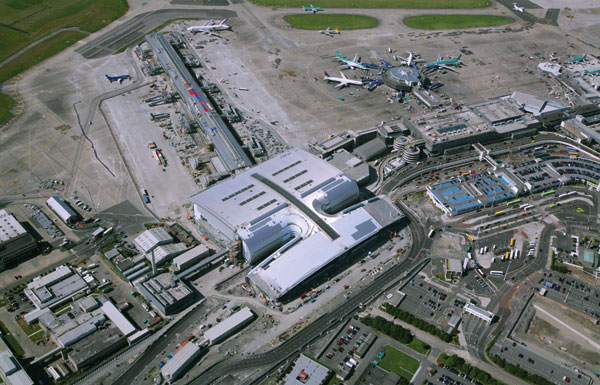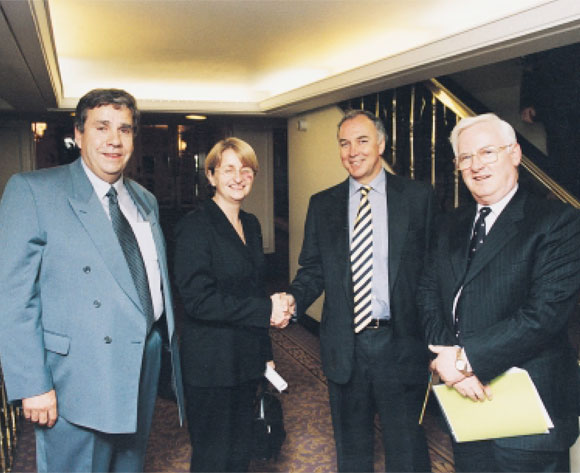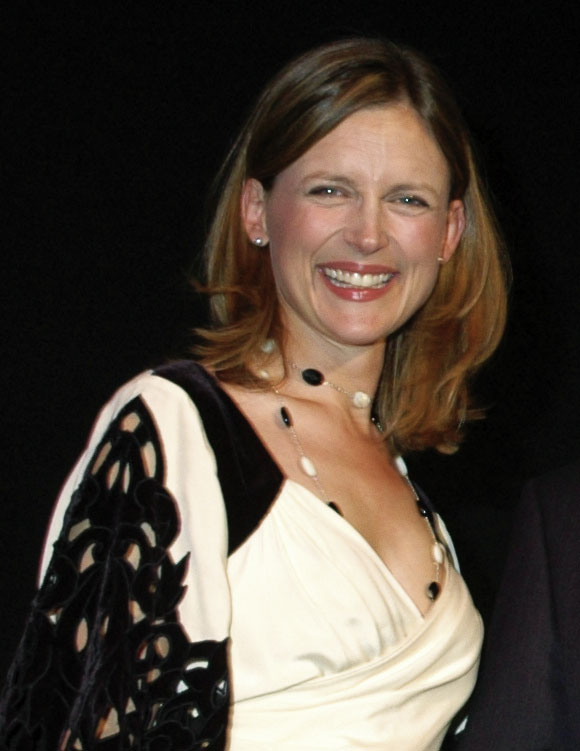SSDA Awards
Structural Steel Design Awards 2010
Introduction
by David W. Lazenby CBE – Chairman of the Judges
This year the Structural Steel Design Awards demonstrate successfully yet again, that steelwork is undoubtedly the structural material of choice. As we all know, these are tough times and the responses from all of the entries show imagination, professionalism, and above all, service to the clients.
This year we had 17 projects on the shortlist, geographically spread right across the UK and Ireland. There is enormous variety, with buildings ranging from a major airport terminal to educational establishments, and many commercial and industrial buildings. We are also starting to see work related to the 2012 London Olympics, and no doubt there will be more to follow.
It is useful to look back to projects a few years ago, and make comparisons with the projects of today. For instance, the airport terminals which we ourselves recognised at the time, like Heathrow T1 or Gatwick South which were of their time – but as we can all observe, we have more recently moved to the creation of large open spaces which are flexible for future changes in demand, and structural steelwork is a key element in this progress.
Probably the most dramatic developments have been in the field of bridges, illustrated by this year’s entries, particularly those at Stockton and Derby. And we must not forget the green issues, which could scarcely be better addressed than in the steelworks at Port Talbot where a vast project is environmentally based and driven, yet still provides a financial payback in only two or three years!
All types of structures have seen real progress over the years, and no doubt the Steelwork Awards have been a major driver in this.
The Judges
 Chairman of the Structural Steel Design Awards judges David Lazenby CBE had a distinguished career as a consulting engineer before taking a new turn in the late 1990s to give British Standards new focus and direction. He also led the huge pan-European exercise to develop the Eurocodes, as Chairman of the lead European committee.
Chairman of the Structural Steel Design Awards judges David Lazenby CBE had a distinguished career as a consulting engineer before taking a new turn in the late 1990s to give British Standards new focus and direction. He also led the huge pan-European exercise to develop the Eurocodes, as Chairman of the lead European committee.
David Lazenby’s career began with Balfour Beatty in 1959. In 1964 he moved to consultant Andrews Kent & Stone, where he stayed for 30 years and became managing partner and subsequently a director. In 1990–91 he was one of the youngest ever Presidents of the Institution of Structural Engineers.
In parallel he had become involved in developing codes and standards, advancing from technical committees and sector boards to become a non-executive director of BSI Group. In 1997 he became the Director of British Standards, one of three executive directors responsible for over 5000 staff in 100+ countries, and a budget of £300+M.
His experience both as a user of standards and as a committee and board member helped him to bring a new focus on market relevance and he is credited with bringing global success to the organization. Establishing it as a world leader in its field, as well as making it profitable, has been almost unique among national standards bodies.
Since 2003 he has operated his own consultancies, Eurocode Consultants, and DWL Consultants, in the fields of company management, and certification.
Martin Manning is a Structural Engineer.
He is an Arup Fellow. He joined the firm directly from university and for over 40 years has worked in Arup offices, and on projects, around the world, most recently on buildings in the transport sector.
He is the Chairman of the SCI, a Fellow of the Royal Academy of Engineering and a Member of The Institution of Structural Engineers.
 Gerry Hayter has spent his career in transport, mainly in London. He joined London Underground as a civil engineering graduate in 1975, working on the design of railway bridges, lifts and stations. After 10 years he joined the Bridges Engineering Division of the Department of Transport where he developed new standards for the design, assessment of highway bridges and structures for 40 tonne lorries.
Gerry Hayter has spent his career in transport, mainly in London. He joined London Underground as a civil engineering graduate in 1975, working on the design of railway bridges, lifts and stations. After 10 years he joined the Bridges Engineering Division of the Department of Transport where he developed new standards for the design, assessment of highway bridges and structures for 40 tonne lorries.
In 1994 he joined the London Network Management Division of the Highways Agency, responsible for the maintenance of highway structures in West London. A number of senior technical posts at the agency followed, culminating in his present position as Group Manager of the Knowledge Management Group, with responsibility for the development of the Agency’s £30m knowledge programme.
 Christopher Nash is a Partner of Grimshaw Architects. He graduated in 1978 from Bristol University School of Architecture, and joined Grimshaw in 1982. As an architect he was responsible for many of the practice’s high profile buildings. These include – from his early years – the Financial Times Printing Works in London’s Docklands and the British Pavilion for the Seville Expo 92, The Western Morning News headquarters in Plymouth, the RAC Regional Headquarters in Bristol and many other projects.
Christopher Nash is a Partner of Grimshaw Architects. He graduated in 1978 from Bristol University School of Architecture, and joined Grimshaw in 1982. As an architect he was responsible for many of the practice’s high profile buildings. These include – from his early years – the Financial Times Printing Works in London’s Docklands and the British Pavilion for the Seville Expo 92, The Western Morning News headquarters in Plymouth, the RAC Regional Headquarters in Bristol and many other projects.
Having spent ten years at Managing Partner, Chris has recently returned to leading projects. Following the success of the Zurich Airport fifth expansion project, he is currently Partner in charge of a number of projects ranging from the Gatwick Airport South Terminal modernisation to the Cutty Sark Conservation Project.
 Joe Locke retired in 2004 from his position at William Hare, where he was responsible for the engineering aspects of the company’s activities and also Executive Director of subsidiary Westbury Tubular Structures; having previously retired in 1998 as Chief Executive Officer of Watson Steel. Joe was an apprentice with Watson and sat his associate membership of the Institution of Structural Engineers at only 23.
Joe Locke retired in 2004 from his position at William Hare, where he was responsible for the engineering aspects of the company’s activities and also Executive Director of subsidiary Westbury Tubular Structures; having previously retired in 1998 as Chief Executive Officer of Watson Steel. Joe was an apprentice with Watson and sat his associate membership of the Institution of Structural Engineers at only 23.
Joe worked at home and overseas on a considerable number of high prestige contracts, including Sellafield nuclear power station’s massive thermal oxide reprocessing plant and the terminal building of Kansai airport, Japan. Joe Locke was awarded an MBE in 1990 for his contribution to the structural steelwork industry. In 2007 he received a Gold Medal of the Institution of Structural Engineers.
 Oliver Tyler joined Wilkinson Eyre Architects (WEA) in 1991; he became an Associate in 1997 and then a Director in 1999. He has over 24 years experience in architectural practice and extensive experience in leading and coordinating the design and construction of high profile buildings.
Oliver Tyler joined Wilkinson Eyre Architects (WEA) in 1991; he became an Associate in 1997 and then a Director in 1999. He has over 24 years experience in architectural practice and extensive experience in leading and coordinating the design and construction of high profile buildings.
Oliver has led a number of prestigious projects at WEA including Stratford Market Depot and Stratford Regional Station in London for the Jubilee Line Extension; the Dyson Headquarters in Wiltshire and the Arena and Convention Centre in Liverpool – the centrepiece for the city’s 2008 Capital of Culture celebrations.
He is currently Director in charge of WEA’s Crossrail Liverpool Street Station Project and a number of major sport and commercial developments.















